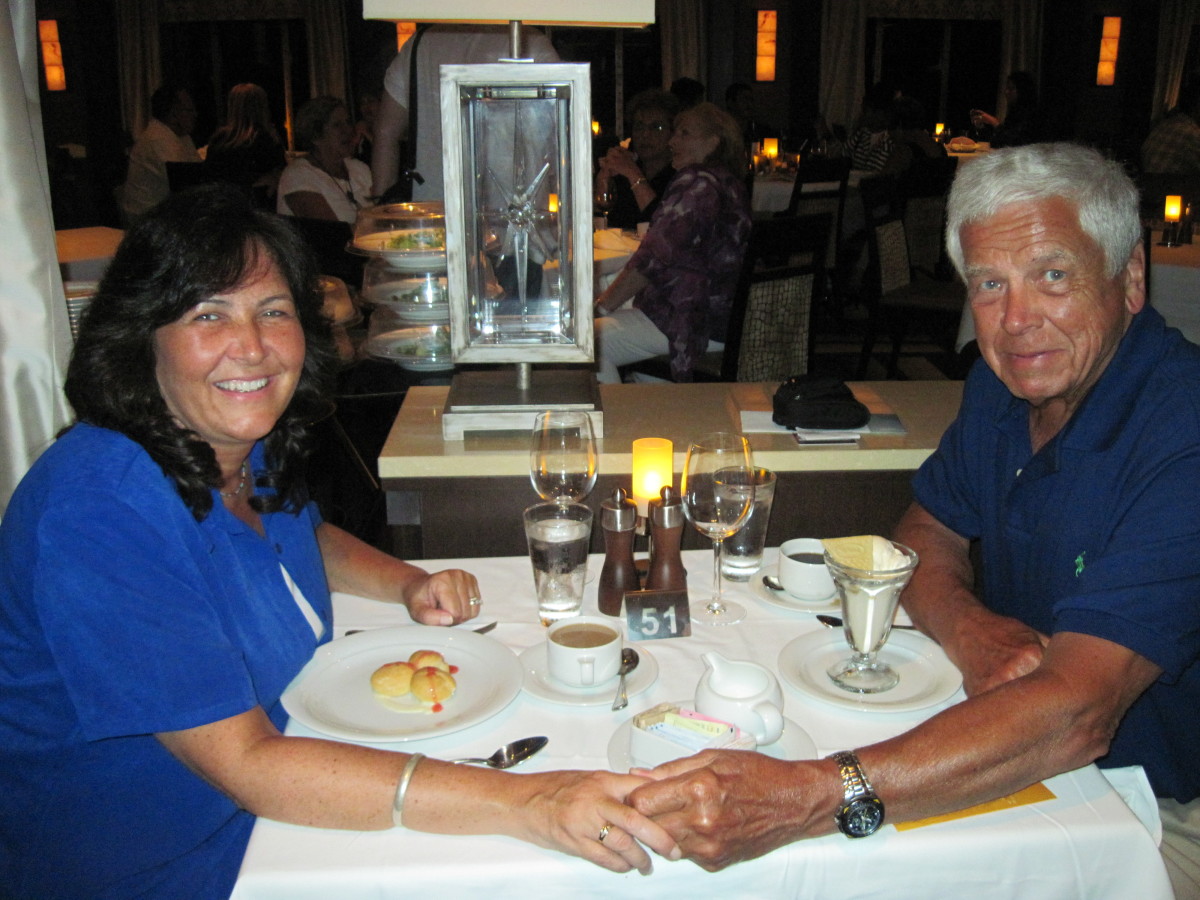Romantic Love versus Sexual Desire

Introduction
It is difficult to think of a topic more universal and more widely addressed than love. Myriad books have been written, songs sung, movies made, plays acted, and television series produced whose central topic is romantic love, whether it is focused on the search, existence, maintenance, or breakdown of this all-consuming singularity. What is incredible about love is that, despite being so ubiquitous, it is still somewhat of an enigma; while sonnets and songs are beautiful, they do not scientifically explain love in a way that makes the phenomenon accessible for study. It seems that definitions of and opinions about love are everywhere, but finding an efficacious scientific definition of love is much more difficult.
Love is a topic of extraordinary importance, relevance, and interest to an exceptionally wide range of people and so it seems worthwhile to explore what psychological literature has to say in regards to this particular emotion – the one so many individuals seem to be dealing with in some way every day, whether searching for it, enjoying being with it, or getting over it. As a note, while there is general agreement that love can be many different things to many different people, and that there are countless different kinds of love, the will be on romantic love so, for the purposes of this endeavor, “love” will refer specifically to romantic love. Explored herein will be how love fits into a popular model of emotions, what makes a romantic love relationship different from other relationships one has, why people may fall out of love, and how sexual desire is different from romantic love – both in construct and biochemistry.
The structural model of emotion – as put forth by Plutchik (2000) – indicates that there are eight basic emotions: acceptance, fear, surprise, sadness, disgust, anger, anticipation, and joy. According to this model, each of these emotions has both more or less intense forms – for example elation is a more intense form of joy, while contentedness is a less intense form – as well as an opposite among the eight (joy-sadness, acceptance-disgust, fear-anger, and surprise-anticipation). These basic emotions also exist in relation to one another, such that they can be put on a wheel where emotions adjacent to one another have a natural progression. This model of emotion also indicates that, much like how one might mix primary and secondary colors to create new ones, emotions may be mixed. Love as a construct under this model is a mixture of acceptance and joy. This idea of where love is in the constellation and structure of human emotions is a helpful lens through which to view the research on this topic.
What is Romantic Love?
One article put forth a very interesting and well-rounded construct of romantic love that allows for more operationalization and study. Beste, Bergner, and Nauta (2003) formulate romantic love as having 10 defining characteristics that, combined, set it apart from any other relationship that one may have. First and foremost is that one is invested “in the well-being of the beloved,” (p.127) meaning that “Jill is invested in the well-being of Jack for his own sake” (p.127) as opposed to being thus invested for what Jack does for Jill; in this way, Jack is not a means to an end for Jill, but rather Jack as an end unto himself.
Stemming from this core tenet of the romantic love relationship are the remaining nine characteristics:
- intimacy,
- sexual desire,
- exclusivity,
- acceptance,
- respect,
- understanding,
- authenticity,
- trust, and
- enjoyment
Each of these attributes adds to the complete constellation of an ideal romantic relationship.
The researchers investigated the differences between individuals who were currently in relationships in which they reported still being in love with their partners and individuals who had fallen out of love with their partner in a past relationship. The results of this study indicated that sustaining romantic love is a matter of maintenance – especially the dimensions of exclusivity and intimacy. Continuing to invest oneself in the best interests of one’s partner and one’s own happiness in the relationship seem to be the key underlying factors that maintain both exclusivity and intimacy. Another important conclusion made in this study is that people seem to fall out of love with their partners mostly only when they perceive that the person they are with is not who they recall having fallen in love with. This means that “as long as they continue to believe that the other is the person they originally took her or him to be, they are likely to remain in love” (p. 135). This conclusion allows that one’s partner does not actually change, but only one’s perception of his or her partner. Specifically, if one’s partner breaks from one of the construct dimensions in a significant way – for example, not honoring exclusivity by having an affair – a person may have grounds on which to determine that their partner is not who the same person they fell in love with, declaring to themselves that “the person I love would never do that to me.” This paints a picture of love that is not fickle, but stable, as long as the individuals in the partnership do not change too greatly in a way that displeases one’s partner.
[Note: I explore this article further in another hub]

Romantic Love vs. Sexual Desire
A distinction made by Diamond (2004) is the difference between sexual desire and romantic love, from psychological, biological, evolutionary, social, and cultural perspectives.
While Diamond clearly does not dispute that sexual desire and romantic love often coexist, this coexistence is described more like the coexistence of coughing and a cold – while most people who have a cold also cough the presence of one need not be dependent on the other; many people cough for reasons that have nothing to do with having a cold, while fewer people seem to have colds without also coughing. In this same way, while most who are in love also sexually desire their partners, there are many instances in which this is not the case and even more examples of one individual sexually desiring another without being in love with the object of that desire.
Diamond also draws a distinction between passionate love and companionate love, with the former most typically being present during early stages of a romantic relationship and which often evolves into the latter over time. Passionate love is marked by more forceful emotions and urgent desires for proximity to and attention from the loved one. Companionate love is marked by more “security, care, and comfort” (p.118).
In addition, Diamond reports that, based on animal studies, human beings rather likely neurochemically process love and desire differently; it seems that estrogens and androgens are mostly responsible for desire, while attachment is fueled by the same processes as reward structures, that is, “opiods, catecholamines, and neuropeptides” (p.118) working in coordinated concert. Further, evolutionarily speaking, theorists indicate that romantic love evolved from parent-infant bonding such that the same processes through which animals bonded with their offspring adapted to include partner bonding for the purpose of raising said offspring. This suggestion is strongly supported by evidence that “these phenomena share the same core emotional and behavioral dynamics” (p.118) and through animal studies showing that the same neurological pathways that are engaged during partner-bonding are similarly engaged during parent-child bonding.
Support for these particular assertions can be found in an article by Gonzaga, Turner, Keltner, Campos, and Altemus (2006) which concluded that a distinction can be made between signs of romantic intimacy and sexual desire. The former is indicated by the same signs that indicate happiness – smiles, nods, gestures, and leaning in towards another – while the former is indicated by the same signs that indicate attention and arousal – lip licking, tongue protrusion, touching, and sexual conversation. Further, the emotions related to happiness and arousal were shown to have different neurological pathways, thus adding support to the idea of sexual desire and romantic love being distinct entities.
Books on Love
Conclusions
Given these conclusions, love as a construct may be further put into the perspective of the structural model of emotions described earlier. The dimensions of romantic love put forth by Beste, Bergner, and Nauta (2003) easily fit into the idea of love being a combination of acceptance and joy; investment in the loved one seems to be a less intense combination of acceptance and joy, intimacy may be conceptualized as a very intense form of acceptance, and so forth.
Taken together, it seems that romantic love includes not only joy and acceptance but also optimism – which may be conceptualized as a combination of joy and anticipation – as it is related to trust and respect. If partners fall out of love because they no longer perceive their partner as someone they are accepting of, then it makes sense according to the structural model of emotions such that a violation of how one perceives the partner to be can shatter acceptance and thus the love is lost.
Additionally, the distinctions between desire and love are important. Diamond (2004) and Gonzaga, Turner, Keltner, Campos, and Altemus (2006) both indicate that there is a distinct difference between the two and the conceptualization of Beste, Bergner, and Nauta (2003) indicates that sexual desire is one of the factors that would exist in an ideal romantic relationship. Altogether it seems that the cough-cold analogy holds water when looking at the constructs from a clinical point of view, as opposed to a researcher’s, such that just as a cough does not make a cold, desire does not make love and at the same time just as a cold nearly always comes with a cough, love nearly always comes with desire.
When taken together, all of this information indicates that we do have a way to quantify and understand romantic love as it exists as well as how it may dissipate.
What remains to be explored completely is how one can go about falling in love; there are many theories – scientific and old wives tales alike – but little acceptance by the general public. Gaggles of websites now offer love-matching services, some which even take into account variables about the individual when matching with others. Falling in love seems to be the trickiest emotion to master – both for individuals and the scientific community and, even if there is resolution on this matter, singers will still be crooning about love’s mystery and uncontrollability: “I can’t help falling in love with you.”
References
Beste, S. A., Bergner, R. M., and Nauta, M. M. (2003). What keeps love alive? An empirical investigation. Family Therapy, 30(3) 125 – 142
Diamond, L.M. (2004). Emerging perspectives on distinctions between romantic love and sexual desire. Current Directions in Psychological Science, 13(3) 116 – 119
Gonzaga, G. C., Turner, R. A., Keltner, D., Campos, B., and Altemus, M. (2006). Romantic love and sexual desire in close relationships. Emotion 6(2) 161 – 179
Plutchik, R. (2000). Emotions in the practice of psychotherapy: Clinical implications of affect theories. Washington, DC: American Psychological Association




